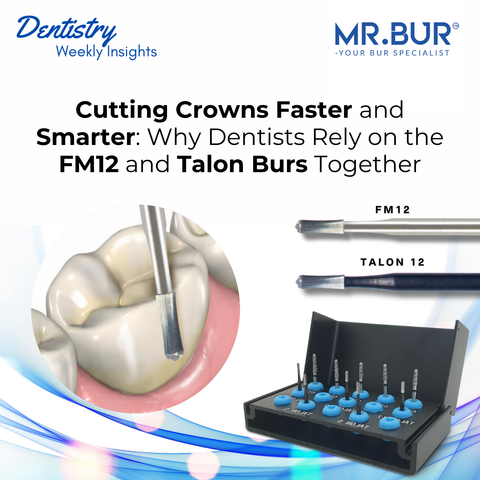When it comes to restorative dentistry, the finishing stage defines whether a restoration blends seamlessly with natural enamel or fails prematurely due to roughness, plaque buildup, or occlusal stress. The choice of polishing instrument isn’t just about shine, it’s about longevity, biology, and patient comfort.
Two areas require different polishing approaches: The anterior esthetic zone, where translucency and gloss matter most, and the posterior functional zone, where occlusion and wear resistance are critical.
Why Surface Polishing Defines Success
A polished surface provides more than just a cosmetic finish:
-
Biological protection → Smooth surfaces prevent bacterial colonization and gingival irritation.
-
Esthetic excellence → High-gloss restorations resist staining and discoloration.
-
Functional durability → Polished ceramics reduce antagonist enamel wear and risk of microfractures.
-
Patient comfort → Eliminates the “rough edge” sensation often reported after restorative work.
Anterior Restorations: The Role of the Mr. Bur Diamond Polisher 6001
Anterior teeth dominate the esthetic zone. Even minor imperfections in surface texture can affect a patient’s smile.
Clinical challenges include:
-
Staining around incisal edges or margins.
-
Rough transitions between composite and enamel.
-
Uneven gloss on porcelain veneers or crowns.
How the 6001 solves them:
-
Designed for precise anterior work, with a 3-step diamond sequence (coarse, medium, fine).
-
Allows polishing of composite veneers, PFM facials, and full-ceramic crowns without flattening morphology.
-
Produces a natural enamel-like shine that blends seamlessly in esthetic cases.
Example: A maxillary central incisor veneer can be polished with the 6001 sequence to restore natural gloss, ensuring it reflects light like neighboring enamel.
Posterior Restorations: The Role of the OCCLUCERA R2104
Posterior occlusal surfaces are not only about esthetics, they are about function under load.
Clinical challenges include:
-
Zirconia or porcelain crowns adjusted chairside often remain rough.
-
Rough occlusals accelerate wear on opposing enamel.
-
Discs and wheels flatten occlusal fissures, disrupting natural function.
How the R2104 solves them:
-
Anatomically designed to fit into cusps and fissures, preserving functional occlusal anatomy.
-
Supports stepwise polishing (coarse → medium → fine) to reach glaze-like gloss.
-
Effective on zirconia, porcelain-fused-to-metal (PFM), lithium disilicate, and hybrid ceramics.
Example: After adjusting occlusion on a mandibular zirconia crown, the R2104 polisher restores gloss and reduces risk of antagonist wear.
Best Practices for Using Diamond Polishers
-
Always polish under water irrigation to reduce heat and microcrack risk.
-
Use light, intermittent pressure — let the diamond do the work.
-
Follow the full polishing sequence for maximum longevity.
-
Replace worn polishers; dull instruments scratch instead of polish.
The Takeaway
Anterior and posterior restorations demand different polishing solutions. With the Mr. Bur 6001 Diamond Polisher for Anterior and the OCCLUCERA R2104 Posterior Polisher, dentists can ensure restorations are biologically safe, functionally durable, and esthetically flawless.
Choosing the right polisher for the right case is the final step to long-term restorative success.
Diamond Burs, Carbide Burs, Interproximal Reduction Bur Kit, Surgical & Lab Use Burs, Endodontic burs, Crown Cutting Kit, Gingivectomy Kit, Root Planning Kit, Orthodontic Kit, Cosmetic Restorative 3-in-1 Kit FG, Surgical Crown Lengthening Kit FG, Composite Polishers, High Speed Burs, Low Speed Burs






